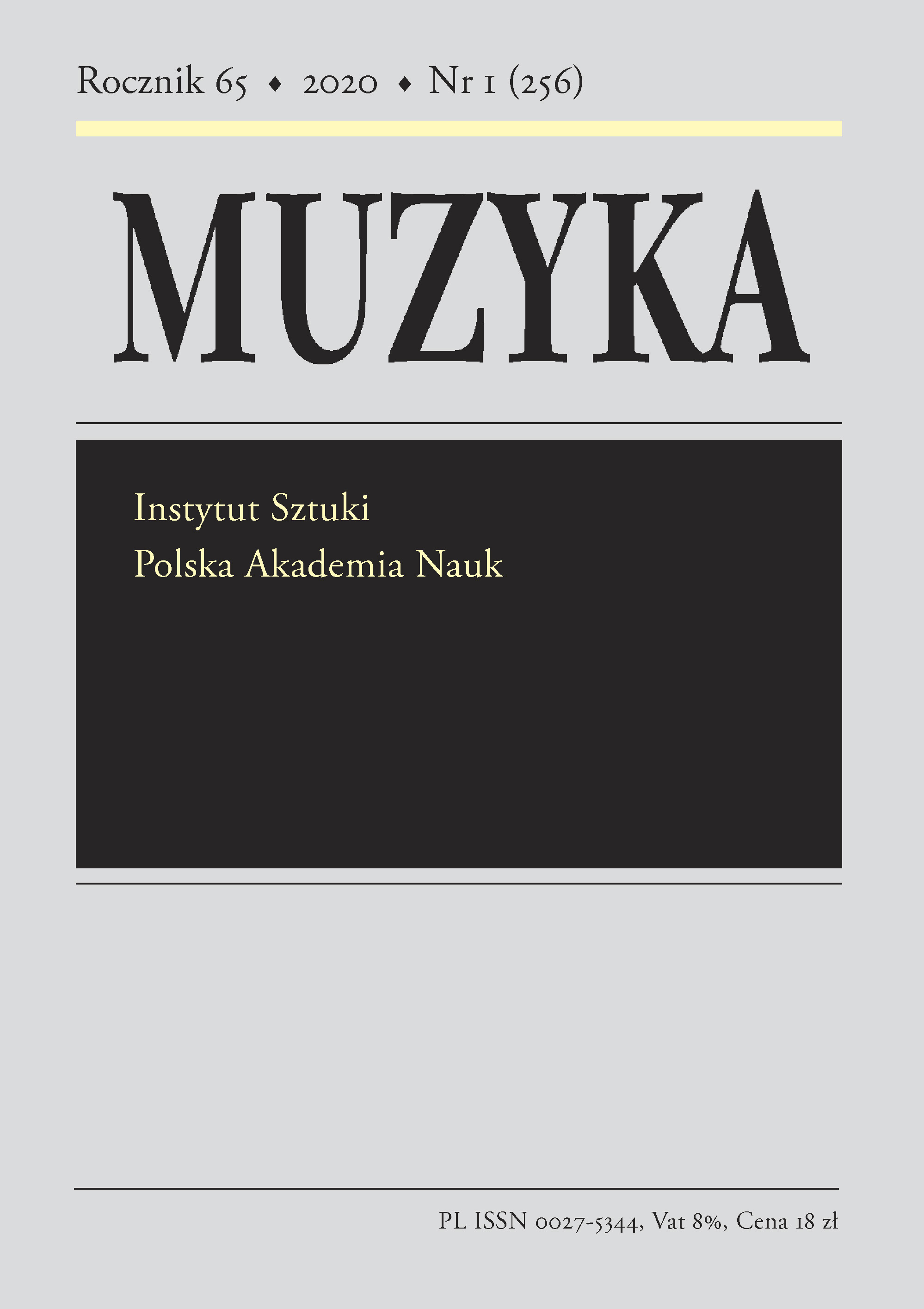Nierozpoznany graduał z kościoła świętojańskiego w Toruniu – przyczynek do badań nad księgami muzycznymi diecezji chełmińskiej w średniowieczu
An unresearched Gradual from St Johns’ Church in Toruń – A contribution to the study of music sources in Chełmno Diocese in the Middle Ages
Author(s): Juliusz Raczkowski, Monika Jakubek-RaczkowskaSubject(s): Music
Published by: Instytut Sztuki Polskiej Akademii Nauk
Keywords: the state of the Teutonic Order in Prussia; liturgical music books; gradual; illuminated manuscripts; diocese of Kulm
Summary/Abstract: This article presents preliminary results of codicological, historical and technological research into a medieval liturgical manuscript from the collection of the Diocesan Museum in Toruń (inv. no. MDT-K-003), carried out thanks to grant no. 0122/NPRH6/H11/85/2018, ‘An Inventory of Toruń’s Art’, part 1, ‘Sacred Art Heritage, Old Town Complex’. In the scant subject literature, this codex is identified as an antiphonary compiled for the parish church of SS John the Baptist and John the Evangelist in Toruń (in the archive of which it remained until recently) and dated to the turn of the sixteenth century. In the present article, this book is identified as a Graduale de tempore used by the Teutonic Knights. The authors analyse the contents of the codex, discuss codicological issues related to its material structure and use, present a study of its decoration and draw new conclusions concerning its provenance. The book demonstrates very close analogies, with respect to both its original structure and the character of the later entries, to an incomplete Graduale de sanctis held in the Diocesan Museum in Pelplin (shelf mark L2). Both these manuscripts probably originated in the environment of Chełmża (Kulmsee) Cathedral Chapter (as is confirmed by comparative analysis with the decoration in the Pelplin Antiphonary L5–L6, compiled in 1419 at the request of Iohannes Copetz, dean of the chapter, in Chełmża (Kulmsee)). The two volumes can probably be dated to the second quarter of the fifteenth century. Our reinterpretation of an important but little-known handwritten source from the Toruń collection shows considerable potential. Comparative studies may lead to the identification of a scriptorium operating in the first half of the fifteenth century at Chełmża (Kulmsee) Cathedral.
Journal: Muzyka
- Issue Year: 65/2020
- Issue No: 1
- Page Range: 95-111
- Page Count: 17
- Language: Polish

